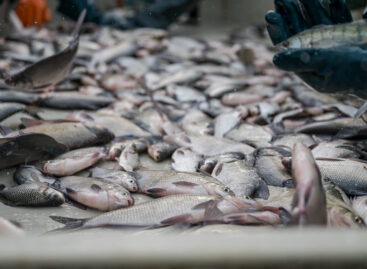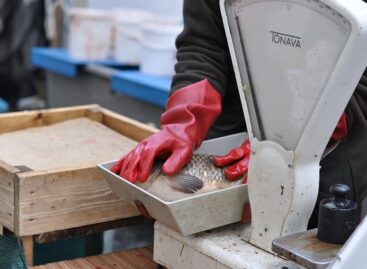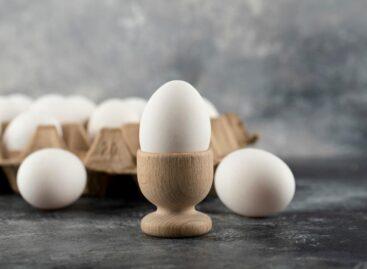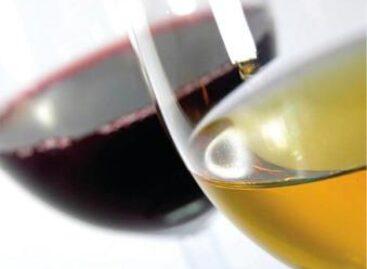Fresh domestic grapes are a healthy treat
In our country, nearly 1,000 hectares of table grapes are grown. Due to its high vitamin and mineral content, the early autumn delicacy is not only delicious, but also healthy – draw attention to the National Chamber of Agriculture and its program promoting fruit and vegetable consumption, the European Fresh Team.
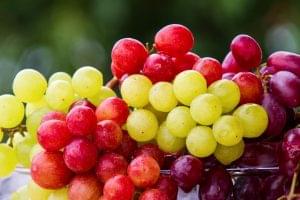
(Photo: Pixabay)
The grape varieties are divided into two groups based on their use: wine or table grapes, but many varieties are dual-use, i.e. suitable for fresh consumption or winemaking, such as chasselas (saszla) or, among the Hungarian varieties, Olivér Irsai and Csabagyöngye. Table grapes are typically beautiful, large-eyed, with crunchy flesh, and their clusters withstand transportation and storage well. Special table grape varieties are, for example, Italy, Hamburg Muscat, Red Globe, and Pölöske Muscat or Pannonia’s treasure among the domestic varieties. From a market point of view, table grape varieties can be grouped according to their color, berry size, shape and cluster size, and seeded and seedless varieties can also be distinguished. Nowadays, there is a tendency for the number of customers who prefer seedless varieties to increase. This change in demand generates new varieties in the seedless category, both white and blue.
In Hungary, table grapes are grown on 373 hectares
The largest area is in Bács-Kiskun (146 hectares), Heves (62) and Tolna (44) counties. At the same time, a significant amount of the dual-use varieties is also used for food, so the total vineyard area for food is around 900-1000 hectares. Thanks to the continuous ripening sequence, table grapes can be eaten fresh from July to October. Csabagyöngye, Queen of the Vineyards muscat, Szasla are popular among the early-ripening ones, Pölöskei muscat, Attila, Pannonia kincse, among the medium-ripening ones, Hamburg muscat, Afuz Ali and Moldova are among the late-ripening ones.
Grapes are 80 percent water, yet their energy and carbohydrate content is high, but their glycemic index is only medium
Due to its high water and potassium content, it is a good diuretic and detoxifier. Its significant content of vitamins A, B, C, K, as well as potassium, selenium, iron and folic acid promotes blood formation and enhances the body’s ability to protect itself. It is also an excellent source of manganese, which is important for metabolic processes. Good advice from the European Fresh Team program for buying really delicious dessert grapes: always buy ripe grapes, because they are not late-ripening fruit! That is, if it is not picked fully ripe, with a high acid content and low sugar content, it will remain acidic and will not ripen. It is also worth checking the integrity of the clusters and the tightness of the berries. Freshness is indicated if the grape stalk is bright green. The curls must always be washed before consumption – reminds the NAK education program.
Related news
There will be no shortage of high-quality Hungarian fish, according to professional organizations
🎧 Hallgasd a cikket: Lejátszás Szünet Folytatás Leállítás Nyelv: Auto…
Read more >Despite the damage caused by the drought, there will be no shortage of high-quality Hungarian fish
🎧 Hallgasd a cikket: Lejátszás Szünet Folytatás Leállítás Nyelv: Auto…
Read more >Despite the drought, there will be no shortage of high-quality Hungarian fish
🎧 Hallgasd a cikket: Lejátszás Szünet Folytatás Leállítás Nyelv: Auto…
Read more >Related news
Egg prices up nearly one-third
🎧 Hallgasd a cikket: Lejátszás Szünet Folytatás Leállítás Nyelv: Auto…
Read more >Layers of problems
🎧 Hallgasd a cikket: Lejátszás Szünet Folytatás Leállítás Nyelv: Auto…
Read more >Too many gifts, too much food: our holiday excesses are putting a serious strain on the environment
🎧 Hallgasd a cikket: Lejátszás Szünet Folytatás Leállítás Nyelv: Auto…
Read more >

